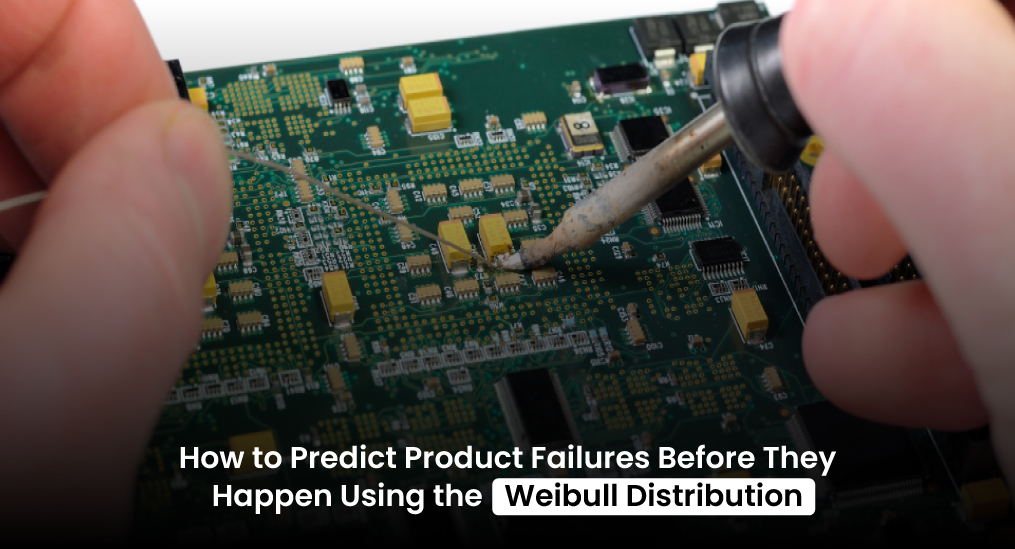5 Ways Predictive Maintenance Reduce Machine Downtime
In any industry, reducing machine downtime is a critical factor in maximizing productivity and profitability. To reduce machine downtime, it’s essential to prevent unexpected equipment failures, which lead to costly repairs, lost production time, and delays in meeting customer demands.
However, businesses can prevent such costly disruptions by leveraging predictive maintenance strategies. Predictive maintenance allows for early detection of potential issues, enabling companies to take proactive steps and reduce downtime.
In this article, we’ll explore five key ways predictive maintenance can help reduce machine downtime and improve overall operational efficiency.
What Is Predictive Maintenance?
Predictive maintenance refers to the use of data and technology to predict equipment failures before they occur, allowing businesses to intervene at the right time and prevent costly downtime. Through tools like condition-based monitoring and real-time equipment monitoring, businesses can continuously track the health of their machines. This allows maintenance teams to address potential issues before they cause equipment failure, ensuring that machines operate smoothly and which reduce machine downtime.
| CTA Box: Ensure maximum uptime with advanced predictive maintenance solutions. Get expert insights and data-driven strategies to reduce machine downtime and optimize your equipment’s performance. Contact us today for reliable and actionable maintenance recommendations! |
5 Effective Ways Predictive Maintenance Reduces Machine Downtime

1. Condition-Based Monitoring Prevents Unexpected Failures
One of the most effective ways to reduce machine downtime is by using condition-based monitoring. This method involves regularly assessing the health of equipment through sensors that track vital parameters such as temperature, vibration, and pressure. When any readings deviate from normal, it signals that a failure rate calculation may be imminent, allowing maintenance teams to take action before the equipment fails completely.
With condition-based monitoring, businesses can detect small issues before they lead to major breakdowns, reducing the need for emergency repairs and minimizing downtime.
2. Equipment Failure Analysis Identifies Weak Points Early
Another critical strategy to reduce machine downtime is performing electronic failure analysis. This process involves examining past failures to identify common patterns or recurring issues with machinery. By understanding the underlying causes of these failures, companies can pinpoint weak points in their equipment and address them before they cause a breakdown.
Equipment failure analysis helps businesses anticipate which parts or systems are most likely to fail, enabling them to replace or repair parts proactively, and therefore reducing the chances of unexpected downtime.
3. Failure Mode Analysis for Proactive Maintenance
Failure mode analysis is a critical process in predictive maintenance that examines how equipment reliability consulting might fail under different conditions. By identifying various potential failure modes—such as wear, overheating, or electrical malfunctions—businesses can develop more effective maintenance plans. This proactive approach ensures that machinery is always prepared for any potential issue, reducing the risk of unplanned downtime.
By incorporating failure mode analysis into your predictive maintenance plan, you can ensure that equipment is maintained according to the most likely risks, minimizing disruptions and downtime
4. Root Cause Failure Analysis Prevents Recurrence
When equipment fails, it’s important to go beyond fixing the issue and address the root cause. Root cause failure analysis helps businesses identify the primary reason for equipment breakdowns, whether it’s due to poor design, incorrect use, or inadequate maintenance. Once the root cause is identified, businesses can implement corrective actions that will prevent the issue from recurring.
By addressing the root cause of failures, businesses can prevent repeated breakdowns, significantly reducing downtime over time. This approach ensures that equipment stays in optimal condition and that downtime is minimized in the long run.
5. Real-Time Equipment Monitoring Ensures Ongoing Efficiency
Real-time equipment monitoring plays a major role in reducing machine downtime. With continuous tracking of equipment performance, businesses can monitor the health of machinery on an ongoing basis, detecting problems before they become critical. Real-time monitoring allows maintenance teams to act immediately when performance starts to decline, preventing sudden failures and ensuring that equipment operates efficiently.
By investing in real-time equipment monitoring, businesses can quickly identify issues and schedule maintenance during non-peak hours, further reducing the impact on product durability testing and minimizing downtime.
| CTA Box: Get 100% accurate MTBF predictions and top-tier durability testing to prevent failures before they happen. Contact us today for trusted, real-world insights that guarantee a smooth launch. |
Predictive Maintenance Benefits to Reduce Machine Downtime
The benefits of predictive maintenance extend beyond just reducing machine downtime. By preventing unexpected breakdowns and optimizing the performance of machinery, businesses can enjoy several advantages:
- Cost Savings: Predictive maintenance helps prevent costly repairs and production delays, saving money in the long run.
- Increased Efficiency: Minimizing downtime leads to a more efficient production process, helping businesses meet their targets.
- Extended Equipment Life: Regular monitoring and proactive maintenance extend the life of machines, reducing the need for expensive replacements.
- Improved Safety: Preventing sudden failures not only reduces downtime but also enhances worker safety by avoiding potentially hazardous breakdowns.
These benefits make predictive maintenance an invaluable strategy for any business looking to reduce downtime and improve overall productivity.
How to Implement Predictive Maintenance to Reduce Machine Downtime

To effectively reduce machine downtime and maximize operational efficiency, businesses must strategically implement predictive maintenance practices. Here are the key steps to ensure successful implementation:
1. Install Monitoring Sensors
The first step in implementing predictive maintenance is to install monitoring sensors on your equipment. These sensors track vital parameters such as temperature, vibration, pressure, sound, and oil quality assurance testing.
These sensors provide real-time data about the health of machines, helping to identify potential issues before they lead to a breakdown. For example, an increase in vibration levels could indicate that a bearing is wearing out or that there’s an imbalance in the machine.
How it helps reduce machine downtime:
By continuously monitoring these key parameters, you can detect early signs of wear or failure. This allows maintenance teams to schedule repairs during non-peak hours, thus avoiding unplanned downtime and minimizing disruption to operations.
2. Use Analytics to Predict Potential Failures
Once sensors are in place, data needs to be collected and analyzed. The data from real-time equipment monitoring systems is then processed and analyzed using predictive algorithms and reliability in software testing. This data can include information about operational conditions, wear and tear, and any other relevant metrics.
By collecting large sets of data from multiple machines over time, businesses can establish patterns and trends. Predictive analytics then uses these patterns to forecast when a failure is likely to occur.
How it helps reduce machine downtime:
The product analysis of real-time data enables businesses to predict failures accurately and plan maintenance activities ahead of time. For example, if a pump starts showing signs of irregularity, predictive analytics can forecast when it is likely to fail, allowing for maintenance to be scheduled before the failure occurs, reducing downtime and repair costs.
3. Develop a Predictive Maintenance Schedule
With data and analysis in hand, businesses can create a predictive maintenance schedule. This is based on the insights gathered from the data, as well as techniques like condition-based monitoring and failure mode analysis.
Rather than waiting for machines to fail (reactive maintenance), predictive maintenance helps schedule interventions before the equipment breaks down. For example, if vibration levels exceed safe thresholds, maintenance can be scheduled to replace worn parts before they cause a failure.
How it helps reduce machine downtime:
By planning maintenance based on actual machine health data, companies can ensure that repairs are done only when necessary, avoiding unnecessary downtime while also preventing unexpected breakdowns. This ensures a more reliable testing and efficient operation.
4. Equip Your Team with the Right Skills
Your maintenance team needs to be adequately trained to handle the insights generated by predictive maintenance systems. It’s not enough to simply collect data; the team must know how to interpret and act on it.
Predictive maintenance systems generate large amounts of data that require specific expertise to interpret. Your maintenance team should understand the tools, techniques, and processes required to use this data effectively.
How it helps reduce machine downtime:
A well-trained team can act quickly when issues are detected, ensuring timely intervention. They can interpret data trends, identify root causes, and implement repairs or adjustments before a breakdown occurs. This proactive approach ensures that maintenance is performed only when necessary and reduces unnecessary downtime.
5. Continuously Assess and Improve Your Strategy
Implementing predictive maintenance is an ongoing process. Once the system is in place, it’s important to continuously monitor its effectiveness and make necessary adjustments to improve results. Over time, new equipment may be added, new failure patterns may emerge, and predictive algorithms may need to be updated.
Predictive maintenance should not be a one-time setup but rather a continually evolving strategy. Regularly reviewing the system helps identify any gaps in the process, allows you to update your approach as needed, and ensures maximum efficiency.
How it helps reduce machine downtime:
By continuously optimizing the predictive maintenance strategy, businesses can further enhance their ability to predict failures and reduce downtime. Regular reviews also allow you to fine-tune the algorithms and maintenance schedules to ensure that equipment is maintained at the optimal intervals, leading to even less downtime in the future.
Wrapping Up
Reducing machine downtime is critical to maintaining a productive, cost-effective business. Through strategies like condition-based monitoring, real-time equipment monitoring, failure mode analysis, and root cause failure analysis, predictive maintenance can help businesses identify and address potential issues before they lead to costly breakdowns.
By implementing these proactive maintenance strategies, businesses can optimize machine performance, increase efficiency, and minimize downtime, ultimately improving their bottom line.
Investing in predictive maintenance isn’t just about keeping machines running—it’s about creating a sustainable, reliable operation that can avoid costly interruptions and keep production on track.
If you are looking to improve your equipment reliability testing standards and reduce downtime, consider exploring predictive maintenance strategies. For expert advice and support, get in touch with us to enhance your operational efficiency today.





